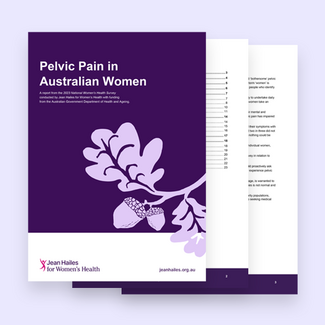“Pain that is felt in your lower belly
and above your legs
is called pelvic pain”.1
Umbrella
What may the Pelvic Pain Umbrella include?
Depending on the Source (DotS) this Umbrella may include:
- Pelvic Pain
- Pudendal Neuralgia
Pelvic Pain
What is pelvic pain?
DotS the definition of pelvic pain may vary. The Australian) Jean Hailes for Women’s (JH) definition is:
“Pain that is felt in your lower belly and above your legs is called pelvic pain”.2
The (United Kingdom) NHS definition is:
“Pelvic pain is felt in the lower part of your tummy. The type of pain varies, and it may be sudden and severe (acute pelvic pain) or last 6 months or longer (chronic pelvic pain)”.3
Chronic Pelvic Pain
What is chronic pelvic pain?
DotS the definition of chronic pelvic pain may vary. In Chronic Pelvic Pain In Women: Symptoms & Causes – Overview the (United States) Mayo Clinic’s definition is:
“Chronic pelvic pain is pain in the area below the belly button and between the hips that lasts six months or longer”.4
Women
Is pelvic pain more common in women?
In Pelvic Pain: Pelvic Pain In Women the NHS elaborate on:
- Period pain
- Conditions affecting female reproductive organs, such as an ovarian cyst or endometriosis
- Pelvic pain in pregnancy
Rarely it could be something more serious, like an ectopic pregnancy, womb cancer or ovarian cancer”.5
Common or Not
How common is pelvic pain in women?
In For Women and People Assigned Female At Birth (AFAB) the Pelvic Pain Foundation of Australia note:
“Pelvic pain affects 1 in 5 Women and People Assigned Female at Birth at some time in their life- yet it is a condition that is rarely discussed”.6
In May Is Pelvic Pain Awareness Month the International Pelvic Pain Society elaborate on:
“Nearly 25 MILLION Americans and (25% of the world’s population) suffer with chronic pelvic pain conditions such as Endometriosis, Irritable Bowel Syndrome, Interstitial Cystitis, Myofascial Pelvic Pain, and much more”.7
Endometriosis
What is endometriosis?
DotS the definition of endometriosis or “endo” may vary. In Endometriosis the JH elaborate on:
“Endometriosis is a condition where cells similar to those that line the uterus are found in other parts of the body, mainly in the pelvis and reproductive organs. This condition can cause mild to severe pain and may affect your fertility”.8
In Endometriosis: Symptoms and Causes – Complications the JH note:
“Endometriosis can affect different systems in the body. While pelvic pain is the most common symptom, women with endometriosis have a higher risk of other pain conditions, such as migraines and arthritis . Back, bladder and bowel pain, and associated conditions, are also common in women with endometriosis”.9
Pudendal Neuralgia
What is pudendal neuralgia?
In Pudendal Neuralgia: Disease At A Glance – Summary the (United States) Genetic and Rare Diseases Information Center elaborate on:
“Pudendal Neuralgia occurs when the pudendal nerve is injured, irritated, or compressed. Symptoms include burning pain (often unilateral), tingling, or numbness in any of the following areas: buttocks, genitals, or perineum (area between the buttocks and genitals). Symptoms are typically present when a person is sitting but often go away when the person is standing or lying down. The pain tends to increase as the day progresses. Additional symptoms include pain during sex and needing to urinate frequently and/or urgently”.10
Look for A Pattern
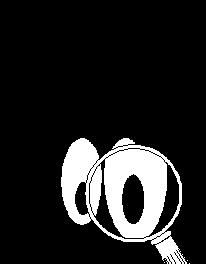 Can keeping a record of the symptoms help?
Can keeping a record of the symptoms help?
In Pelvic Pain: Know the Different Causes and When To Seek Help – Key Advice for Persistent Pelvic Pain the JH note:
Health Care Provider
What if I think I have pelvic pain?
If you think you have pelvic pain, it may be in your best interest to choose to talk to your health care provider about this.
In Chronic Pelvic Pain In Women: Symptoms & Causes – Symptoms: When To See A Doctor the Mayo Clinic explain:
“In general, see your doctor or other health care professional if the pain disrupts your daily life or if your symptoms seem to get worse”.12
In Pelvic Pain: Know the Different Causes and When To Seek Help – Key Advice for Persistent Pelvic Pain the JH elaborate on:

- “If you feel you are not being heard by your doctor or health professional, do not be afraid to seek a second opinion.
- A multidisciplinary team (one made up of experts in different fields) has been shown to be the best for managing persistent pelvic pain. Chronic pain is not just the immediate pain, but also involves and affects a number of areas of health and life, so approaching it from different angles and treating the whole person is crucial. The multidisciplinary team can include a specialist women’s health GP, a gynaecologist, a a pain specialist, a physiotherapist, a psychologist, a sexual counsellor, a naturopath and other complementary therapists”.13
Health Topics A-Z
Where may I find Health Topics A-Z related to Pelvic Pain?
In Health Topics A-Z you may find:
Links
Where may I find Links related to Pelvic Pain?
Your Country may have Links similar to:
Links
This Links List to third party websites is neither comprehensive nor exhaustive. Inclusion on this Links List does not imply endorsement or recommendation. Non-inclusion on this Links List does not imply non-endorsement or non-recommendation. Third party websites are not under the control of Meno Martha International Menopause Directory. Third party websites may contain explicit medical images and/or sexual references. Please read Meno Martha International Menopause Directory’s Links Policy before proceeding to a Link. Please contact Webmaster if you experience a problem with a Link.New or Updated
- 10 Ways To Reduce Pain
- An Irritable Bowel
- Bad Headache or Migraine
- Bladder Pain
- Chronic Pelvic Pain In Women: Diagnosis & Treatment
- Chronic Pelvic Pain In Women: Symptoms & Causes
- Chronic Pelvic Pain: FAQ
- Diagnosis
- Endometriosis
- Endometriosis
- Endometriosis: About Endometriosis [+ Video]
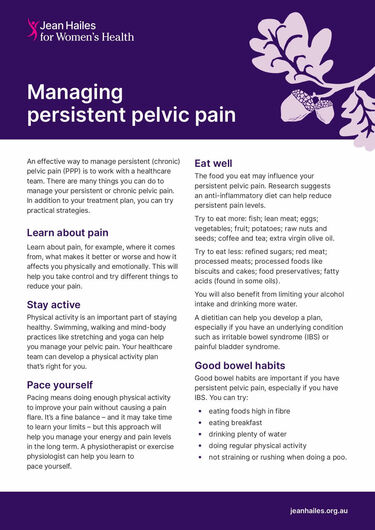 FAQs: Pelvic Inflammatory Disease (PID)
FAQs: Pelvic Inflammatory Disease (PID)- For Women and People Assigned Female At Birth (AFAB)
- Gynecologic Cancer Awareness
- Gynecologic Cancers
- How To Find Relief From Chronic Pelvic Pain
- Links of Interest
- Managing Persistent Pelvic Pain
- May Is Pelvic Pain Awareness Month: Move Against Pelvic Pain
- Mayo Clinic Q and A: Endometrial Ablation When Pelvic Pain or Endometriosis Are Present
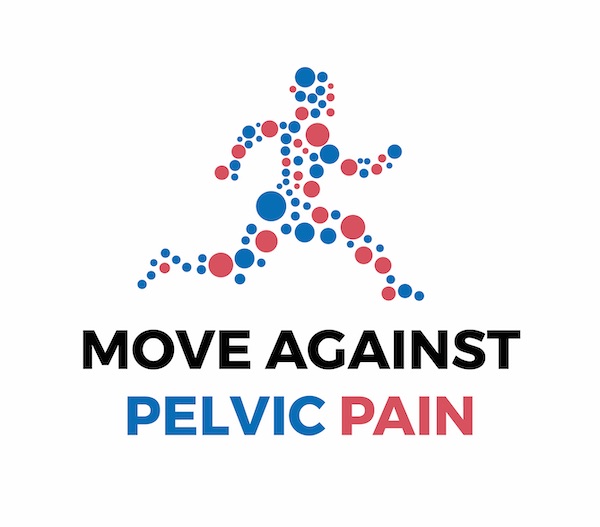 Medications
Medications- Menopause Map: Downloadable Resources – My Personal Path Print Tools: Symptom Tracker
- National Center for Complementary and Integrative Health: Consumer Information on Pain
- National Pain Week: Highlighting Persistent Pelvic Pain [20 July 2023, Australia]
- Pain Where You Sit – Pudendal Neuralgia
- Pelvic Exam
- Pelvic Inflammatory Disease
- Pelvic Inflammatory Disease
- Pelvic Inflammatory Disease
- Pelvic Inflammatory Disease (PID)
- Pelvic Inflammatory Disease (PID): Diagnosis and Treatment
- Pelvic Inflammatory Disease (PID): Symptoms and Causes
- Pelvic Pain
- Pelvic Pain
- Pelvic Pain
- Pelvic Pain Conditions
- Pelvic Pain In Australian Women 2023
- Pelvic Pain In Women and AFAB
- Pelvic Pain: Causes
- Pelvic Pain: Know the Different Causes and When To Seek Help
- Pelvicpain.org [International Pelvic Pain Society]
- Pelvicpain.org [International Pelvic Pain Society]: Find A Healthcare Professional
- Pelvicpain.org [International Pelvic Pain Society]: Informational Handouts
- Pelvicpain.org.au [Pelvic Pain Foundation of Australia]
- Pelvicpain.org.uk [Pelvic Pain Support Network, United Kingdom]
- Pelvicpain.org.uk [Pelvic Pain Support Network, United Kingdom]: Resources and Clinics
- Persistent Genital Arousal Disorder
- Persistent Pelvic Pain
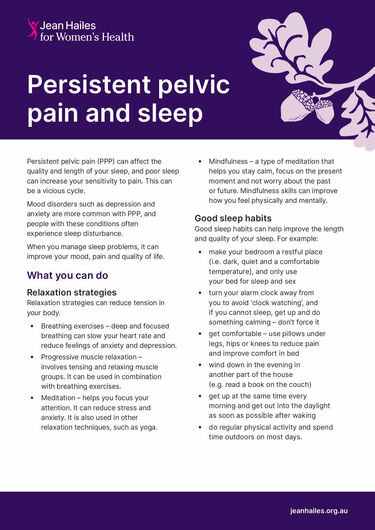
- Persistent Pelvic Pain and Sleep
- Pudendal.hope.info [Health Organization for Pudendal Education]
- Pudendal Neuralgia
- Pudendal Neuralgia
- Questions for Your Health Professional
- Supportincontinence.org [Support Incontinence, United Kingdom]
- Symptom Checker: Pelvic Pain In Adult Females
- Talking About Pelvic Pain
- The Impact of Pelvic Pain Is Vastly Underestimated
- Treatment
- Understanding Long-Term (Chronic) Pelvic Pain
- Video Animation for Women: Persistent Pelvic Pain
- Wfipp.org [World Federation of Incontinence and Pelvic Problems]
- Why We’re Zeroing In on Pelvic Pain
Sources
Where may I find the Sources quoted?
You may find the Sources quoted at:
Sources
- Pelvic Pain: Know the Different Causes and When To Seek Help. Last Updated: 01 September 2023 | Last Reviewed: 02 August 2022. Jean Hailes for Women’s Health https://www.jeanhailes.org.au/news/pelvic-pain-know-the-differences-and-when-to-seek-help Accessed: 02 September 2023
- Pelvic Pain: Know the Different Causes and When To Seek Help. Last Updated: 01 September 2023 | Last Reviewed: 02 August 2022. Jean Hailes for Women’s Health https://www.jeanhailes.org.au/news/pelvic-pain-know-the-differences-and-when-to-seek-help Accessed: 02 September 2023
- Pelvic Pain. Page Last Reviewed: 17 March 2022. NHS https://www.nhs.uk/conditions/pelvic-pain/ Accessed: 02 September 2023
- Chronic Pelvic Pain In Women: Symptoms & Causes – Overview. 03 August 2023. Mayo Clinic https://www.mayoclinic.org/diseases-conditions/chronic-pelvic-pain/symptoms-causes/syc-20354368 Accessed: 02 September 2023
- Pelvic Pain: Pelvic Pain In Women. Page Last Reviewed: 17 March 2022. NHS https://www.nhs.uk/conditions/pelvic-pain/#sudden-unexpected-pelvic-pain Accessed: 02 September 2023
- For Women and People Assigned Female At Birth (AFAB). Pelvic Pain Foundation of Australia https://www.pelvicpain.org.au/learn/for-women/ Accessed: 02 September 2023
- May Is Pelvic Pain Awareness Month. International Pelvic Pain Society https://www.pelvicpain.org/resources/may-is-pelvic-pain-awareness-month Accessed: 02 September 2023
- Endometriosis. Jean Hailes for Women’s Health https://jeanhailes.org.au/health-a-z/endometriosis Accessed: 02 September 2023
- Endometriosis: Symptoms and Causes – Complications. Last Updated: 26 August 2023 | Last Reviewed: 31 January 2023. Jean Hailes for Women’s Health https://jeanhailes.org.au/health-a-z/endometriosis/symptoms-causes Accessed: 02 September 2023
- Pudendal Neuralgia: Disease At A Glance – Summary. Last Updated: February 2023. Genetic and Rare Diseases Information Center https://rarediseases.info.nih.gov/diseases/10713/pudendal-neuralgia Accessed: 02 September 2023
- Pelvic Pain: Know the Different Causes and When To Seek Help – Key Advice for Persistent Pelvic Pain. Last Updated: 01 September 2023 | Last Reviewed: 02 August 2022. Jean Hailes for Women’s Health https://www.jeanhailes.org.au/news/pelvic-pain-know-the-differences-and-when-to-seek-help Accessed: 02 September 2023
- Chronic Pelvic Pain In Women: Symptoms & Causes – Symptoms: When To See A Doctor. 12 August 2023. Mayo Clinic https://www.mayoclinic.org/diseases-conditions/chronic-pelvic-pain/symptoms-causes/syc-20354368 Accessed: 02 September 2023
- Pelvic Pain: Know the Different Causes and When To Seek Help – Key Advice for Persistent Pelvic Pain. Last Updated: 01 September 2023 | Last Reviewed: 02 August 2022. Jean Hailes for Women’s Health https://www.jeanhailes.org.au/news/pelvic-pain-know-the-differences-and-when-to-seek-help Accessed: 02 September 2023


